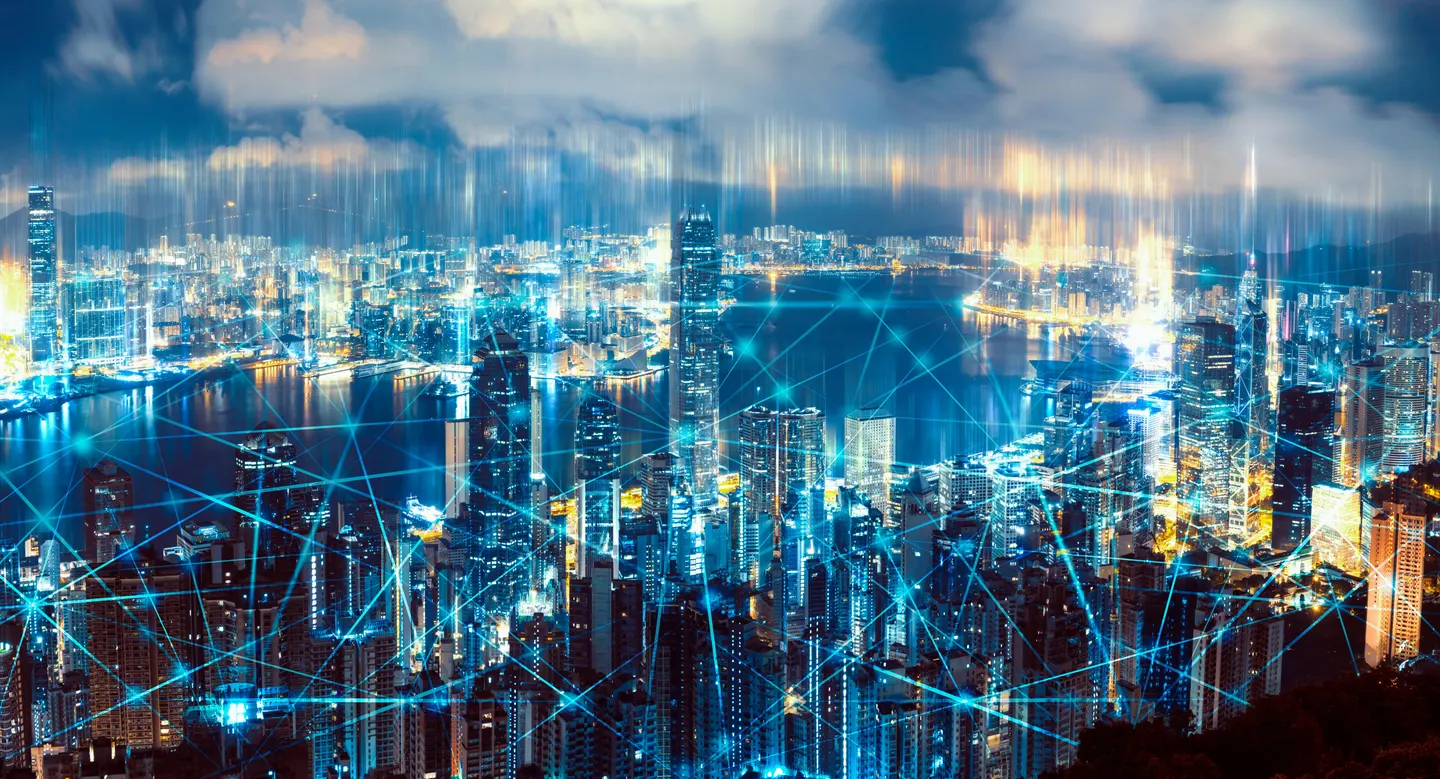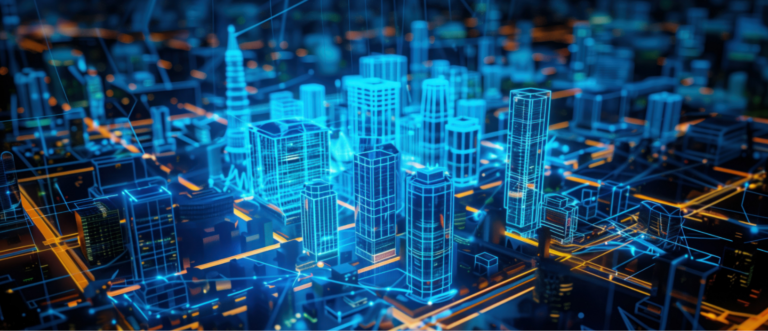Digital-first modelling and urban metaverse technologies are transforming city planning, construction, and experiences in 2025. As we witness unprecedented urbanisation alongside rapid technological advancement, the intersection of virtual environments and physical city infrastructure has become a defining characteristic of modern urban development. This transformation represents not just a technological shift but a fundamental reimagining of how humans interact with urban spaces.
The Rise of Digital-First Urban Development
Digital-first modelling has emerged as the cornerstone of contemporary urban planning, fundamentally altering the traditional approach to city development. Unlike conventional methods that begin with physical blueprints and models, digital-first approaches prioritise virtual prototyping, simulation, and testing before any physical construction begins. This methodology allows urban planners and architects to create comprehensive virtual environments that can be modified, tested, and optimised in real-time.
The integration of artificial intelligence and machine learning into these digital modelling systems has created unprecedented opportunities for predictive urban planning. Cities can now simulate traffic patterns, environmental impacts, energy consumption, and social dynamics years before groundbreaking occurs. This approach significantly reduces costs, minimises environmental impact, and ensures that urban developments meet the actual needs of their future inhabitants.
The Industrial Metaverse Boom
The industrial metaverse market is experiencing explosive growth, with forecasts indicating it will exceed $150 billion by 2035. This expansion is driven by the integration of extended reality (XR), artificial intelligence, digital twins, and Internet of Things (IoT) technologies, which create immersive and collaborative environments for urban development. The industrial metaverse is transforming manufacturing, logistics, energy management, and infrastructure development through the use of advanced virtual and augmented reality applications.
Major technology companies are leading this transformation with innovative platforms and frameworks. NVIDIA’s recent announcement of the Omniverse Blueprint for smart city AI demonstrates how physical AI is being brought to entire cities and their critical infrastructure. This reference framework enables cities to create comprehensive digital twins that accurately reflect real-world conditions, facilitating the sophisticated testing and optimisation of urban systems.
Smart Cities Integration and Infrastructure
The concept of smart cities has evolved significantly in 2025, moving beyond simple IoT implementations to comprehensive digital ecosystems that leverage metaverse technologies. Modern smart cities are implementing AI-assisted traffic management, intelligent street lighting systems, and real-time environmental monitoring through interconnected digital platforms that exist simultaneously in physical and virtual spaces.
By 2025, urban mobility is expected to have evolved into a seamless ecosystem that integrates autonomous shuttles, intelligent traffic management systems, on-demand ride-sharing services, and micromobility options, including e-bikes and scooters. Before the implementation of physical infrastructure, uniform Mobility-as-a-Service (MaaS) frameworks manage these systems in digital-first environments.
Cities like Taipei, Taoyuan, and Tainan have emerged as global leaders in smart city implementation, showcasing advanced solutions that blur the lines between digital modelling and physical urban infrastructure. These cities demonstrate how Public-Private-People Partnership models can effectively involve citizens in the urban planning process through metaverse platforms that allow for collaborative design and feedback.
Extended Reality and Urban Experiences
Extended Reality technologies, including virtual reality (VR), augmented reality (AR), and mixed reality (MR), have become integral to urban metaverse development. The widespread adoption of devices like the Quest 3S is bringing mixed reality experiences to mainstream urban dwellers for the first time, creating new possibilities for how people interact with city environments.
These technologies enable citizens to visualise proposed developments, participate in virtual town halls, and experience urban changes before they occur physically. Urban planners can conduct virtual walking tours of proposed neighbourhoods, allowing stakeholders to provide feedback on designs that exist only in digital form.
Digital Twins and Urban Resilience

Digital twin technology has become fundamental to creating resilient urban environments that can adapt to challenges such as climate change, natural disasters, and rapid population growth. Urban digital twins serve as comprehensive virtual replicas of cities, incorporating real-time data from thousands of sensors and monitoring systems throughout the urban environment.
These digital representations allow city managers to test emergency response scenarios, optimise resource allocation, and predict infrastructure needs before problems arise. The integration of AI and machine learning with digital twin technology enables predictive maintenance of urban infrastructure, reducing costs and improving service reliability for citizens.
The upcoming “Urban Digital Twins for a Sustainable Transformation of Cities” conference highlights the growing importance of these technologies in driving urban transformation toward sustainability and resilience. Cities worldwide are recognising that digital-first approaches to urban management are essential for addressing 21st-century challenges.
Metaverse Applications in Urban Development
The metaverse is expanding beyond gaming and entertainment to become a practical tool for urban development and civic engagement. Virtual fashion weeks, immersive educational experiences, and collaborative design sessions are taking place in metaverse environments that directly influence physical urban spaces. These applications demonstrate how digital-first approaches can enhance creativity and collaboration in urban planning.
Metaverse apps enable potential buyers and inhabitants to experience properties and neighbourhoods before they are built virtually, revolutionising real estate development. This technology reduces the risk for developers and provides consumers with unprecedented insight into their future living environments.
Future Outlook and Market Penetration
Market projections indicate that metaverse user penetration will reach 17.4% in 2025 and increase to 39.7% by 2030, with an average value per user of $92. This growth represents a significant opportunity for urban developers and city planners to engage with citizens through digital-first platforms and virtual environments.
The integration of 5G networks, artificial intelligence, and advanced computing infrastructure is creating the technical foundation necessary for seamless urban metaverse experiences. As these technologies mature, the distinction between digital modelling and physical urban environments will continue to blur, creating hybrid spaces that offer the benefits of both virtual and physical interaction.
Conclusion
The year 2025 marks a pivotal moment in urban development, where digital-first modelling and metaverse technologies are no longer experimental concepts but practical tools for creating more effective cities. The convergence of AI, XR, IoT, and digital twin technologies is enabling urban planners to design, test, and optimise city environments with unprecedented precision and community involvement.
As we look toward the future, the success of urban metaverse initiatives will depend on their ability to enhance, rather than replace, human-centred urban experiences. The most successful implementations will be those that employ digital-first approaches to create more sustainable, inclusive, and livable cities that cater to the needs of all residents. The urban metaverse represents not just a technological advancement but a new paradigm for how towns and humans can coexist in an increasingly digital world.

